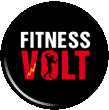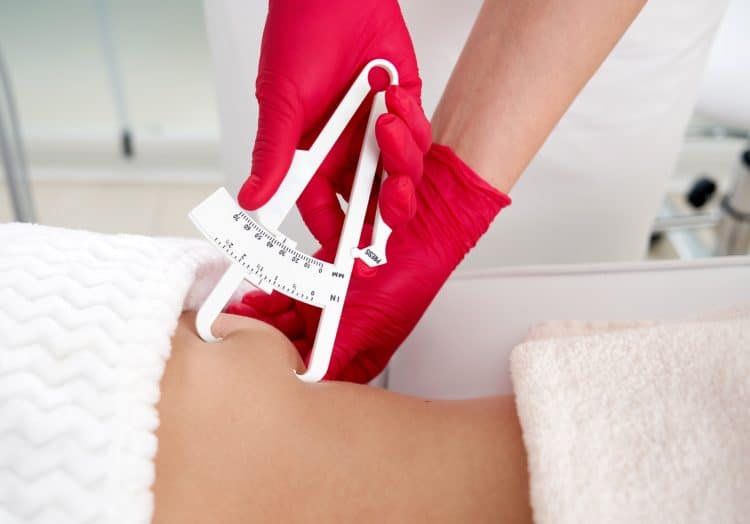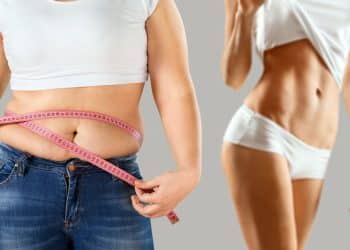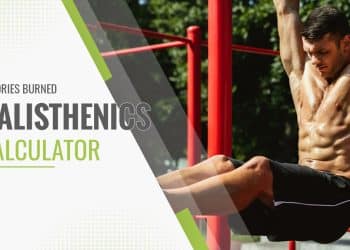Discover how to measure your body fat using a skinfold caliper and our calculator.
Choose Measurements Formula
What Are Skinfold Measurements?
Skinfold testing is one of the most common, convenient, and affordable ways to approximate body fat percentage and body composition (Fat to lean mass ratio).
Measuring folds of skin and the subcutaneous adipose fat tissue underneath whether using a caliper or the two-finger pinch method is a consistent and reliable method that’s been used for over 50 years.
A lot of trainers use this assessment to track their client’s body fat numbers but it’s also possible to do it at home by yourself or ideally using a helper with experience for best accuracy and for the harder-to-reach areas.
There are also a few different variations of skinfold site testing. For example, the 3 site skinfold test measures three common fat-storing zones such as chest, abdomen, and thigh (common for men), or triceps, thigh, and suprailiac (common for women). There are also 4 and 7 site assessments as well.
This specific body fat skinfold calculator actually uses 3, 4, and 7 site skinfold measurement formulas to estimate body fat, body composition, and fat category.
Level Up Your Fitness: Join our 💪 strong community in Fitness Volt Newsletter. Get daily inspiration, expert-backed workouts, nutrition tips, the latest in strength sports, and the support you need to reach your goals. Subscribe for free!
Skinfold sites based on formulas:
- 3 skinfolds – Chest, abdomen, thigh (men) or triceps, thigh and suprailiac (women)
- 4 skinfolds – Triceps, thigh, suprailiac, abdomen (same for men and women)
- 7 skinfolds – Chest, abdomen, thigh, triceps, axilla, subscapula, and suprailiac (same for men and women)
Why Measure Body Fat?
Body fat percentage and body composition can tell a lot about what kind of shape someone is in. It can also be a predictor of health risks such as diabetes, heart disease, cancers, and more.
In fact, many health publications say that a waist bigger than 35 inches in circumference for women and 40 inches for men increases disease risk.
That doesn’t mean you have to aim for a low body fat percentage but staying within a healthy range should be a priority for everyone.
A lot of athletes, bodybuilders, and fitness enthusiasts also have to monitor their body composition as it can affect performance and how their physiques look.
Too much body fat can affect athleticism and it covers up all of the hard-earned muscle underneath.
Additionally, people tend to feel better about themselves when they aren’t carrying around a lot of excess body fat.
How To Use The Body Fat Skinfold Calculator
The body fat skinfold calculator is very easy to use once you’ve got your measurements. We’ve included step-by-step instructions below.
Step 1: Choose the desired unit of measurement: Imperial (lbs) or metric (kg)
Step 2: Select your gender
Step 3: Enter your weight
Step 4: Type in your age
Step 5: Choose the desired measurement formula: 3, 4, or 7 skinfolds. Note: Do not click on the gray circles beside each measurement, rather click directly on the text (e.g., 3 skinfolds, 4 skinfolds, 7 skinfolds) to effectively select the desired option.
Step 6: Take your skinfold measurements and enter the values into the boxes.
Step 7: Click Calculate!
Taking Measurements
To get the most accurate and consistent results, it’s important to ensure you’re measuring correctly.
If using the caliper or thumb and index finger to pinch the folds, you want to make sure you’re only grasping the fat and not the muscle too. You can feel the muscle underneath and if that is the case, bring your fingers closer together until you’re only pinching and pulling the fat. Adjust your grip as needed.
If possible, have someone assist you. However, there are many great resources that’ll help you perform body fat testing on yourself. Whatever you do, be consistent with how you measure.
You should also take a minimum of two measurements per skinfold area for best results and it’s also a good idea to wait a few seconds between measurements.
If measurements are off by more than 1mm after multiple tries, take another and use the average of those. Measure roughly 1 cm above or below the skinfold.
It’s also commonly recommended to test the right side of the body which ensures consistency.
Here’s an example of how to take measurements of the chest, abdomen, and thigh. We’ve also explained how to take all skinfold measurements.
Chest
The chest skinfold is measured diagonally and a little higher than where’d you’d draw a line from the nipple to armpit.
Abdomen
Pinch a vertical skinfold on the right side of the navel or belly button.
Thigh
Lift the upper leg as high as possible and take a vertical skinfold measurement between the hip and knee joints.
Triceps
With the arm relaxed, pinch a vertical fold halfway between acromion (bony protrusion at top of shoulder) and the olecranon processes or bony point of the elbow.
Suprailiac
This should be a diagonal fold (downward angle from back to front) about 1 cm above the anterior superior iliac crest or the top of the hip bone.
Axilla (midaxillary)
This site is not as common as the others however, it is part of the 7 skinfold measurement.
For this measurement, draw an imaginary vertical line from the mid axilla or middle of the armpit to where the lowest part of the breastbone is.
Pinch a vertical skinfold to get your measurement.
Subscapula
Pinch a diagonal skinfold (right to left downward angle) 1-2 cm below the bottom of the right shoulder blade. Place the arm behind the back to more easily locate the bottom of the scapula.
Analyzing your results
So now it’s time to evaluate your numbers. The calculator shows results for the following categories in the same order listed.
- Body fat (percentage)
- Fat mass (fat weight in pounds/kg)
- Lean mass (lean weight in pounds/kg)
- Fat category (e.g, fit, athletic, acceptable, obese)
This part is rather self-explanatory.
Body fat is the percentage of your body that is composed of fat tissue. Fat mass is your weight in fat pounds/kg, and lean mass is your weight in lean pounds/kg (e.g, muscle, bones, organs, skin, etc, and excluding fat mass). Fat category is pretty much an assessment of your current physical shape.
Jackson and Pollock Formula
Each of these methods uses the Jackson and Pollock formula to estimate body fat. The equations were developed by Dr. Andrew Jackson and M.L. Pollock.
Below are Jackson and Pollock body fat and bone density formulas for males and females based on information provided by topendsports.com.
Males
4-Site Skinfold formula
Skinfold sites are abdominal, triceps, thigh, and suprailiac and are measured in mm.
Level Up Your Fitness: Join our 💪 strong community in Fitness Volt Newsletter. Get daily inspiration, expert-backed workouts, nutrition tips, the latest in strength sports, and the support you need to reach your goals. Subscribe for free!
Females
4-Site body fat skinfold formula
Skinfold sites are abdominal, triceps, thigh, and suprailiac and are measured in mm.
3-Site body fat skinfold formula
Skinfold sites are abdominal, triceps, and suprailiac and are measured in mm.
The Jackson and Pollock methods also estimate bone density.
Males
3-Site bone density skinfold formula
3-Site bone density skinfold formula
7-Site bone density skinfold formula
Skinfold sites are Chest, Axilla, Tricep, Subscapular, Abdominal, Suprailiac and are measured in mm.
Females
Bone density including girth measurement
3-Site bone density skinfold formula
7-Site bone density skinfold formula
Skinfold sites are Chest, Axilla, Tricep, Subscapular, Abdominal, Suprailiac, and Thigh and are measured in mm.
Accuracy Between Various Body Fat Measuring Methods
Not all body fat measuring methods are created equally.
But whichever you do choose to use will likely depend on a few different factors such as budget, convenience, frequency of use, and how accurate you truly care to be with your estimates.
But what we can say is that the skinfold is probably the best option for most people as it’s cheaper, simpler, and very user-friendly. Simply take a few measurements and enter them into this quick and easy tool. We can’t say the same for most of the other methods.
While hopping on the scale is a good idea to track your progress, most don’t display your body fat percentage. Sure, there are more techy ones that use bioelectrical impedance analysis (BIA) to estimate body fat but we’d think that the accuracy would vary widely with these devices. There are good options out there though.
The mirror may be a better judge than a scale, however, most can’t tell their body composition just by looking at themselves and if you want a precise number, you may want to opt for one of the body fat testing methods.
Skinfold measurements are decently accurate when done correctly
Skinfold assessments, when done correctly, can give you a good place to start. Not to mention, calipers can be found cheap or you could just use a soft measuring tape and two fingers (whether yours or a helper’s).
Compared to more expensive options
We can’t dismiss the fact that some of the more expensive methods may give you a little better accuracy as to your true bf percentage. But even then, you’re likely to see a lot of variance between them.
More advanced body fat measuring technology such as hydrostatic weighing and DEXA/DXA scan (referred to as Gold Standards) could get you closer to the real numbers but they do cost more and you’ll have to do them at a facility that offers these options.
Skinfold measurements, when done the right way, are still superior to simple calculator tools that only require your gender, age, height, and weight. You’ll also likely get more realistic results than using a cheap body fat scale and some BIA devices.
But… really and truly whatever method you use just be consistent with it. If you can match your mirror results to improved body fat percentage numbers then your method is likely working.
Talking about mirrors, we also suggest familiarizing yourself with what certain body fat percentages look like and this can also help you to find the right method and numbers for you!
See if you’re Navy fit with the US Navy body fat calculator.
Body Fat in Men and Women
Men and women are unique creatures and therefore do not store or distribute body fat exactly the same (1).
Women tend to carry more fat in the glutes, thighs, and legs and it’s that way because of reproduction. Men, on the other hand, often store fat in areas such as the midsection, chest, shoulders, neck, and upper body overall.
“It’s comforting to know that women can be and should be fatter than men. They have a totally different reproduction function and the higher fat in women supports that reproductive function,” explained Barbara J. Moore, PhD, president of Shape Up! America.
The difference in essential fat (fat needed for basic health and functioning) between women and men is pretty significant too. For example, according to American Council on Exercise (ACE) body fat charts, women should have 10-13% essential fat while men can get away with 2-5% body fat.
Fat Type
But body fat percentage isn’t the only thing to look at, we also have to consider the type of fat.
Visceral fat is considered a more dangerous type of fat that tends to store in the midsection and wrap around the organs deep inside the body.
You probably won’t see visceral tissue unlike subcutaneous fat (fat beneath the skin) which is more superficial and what you grab onto for skinfold measurements.
Excess visceral fat is believed to cause a higher risk of heart attacks, stroke, cancer, diabetes, dementia, and more. However, having too much subcutaneous fat isn’t a good thing either as it too can have a negative effect on health.
Both men and women should be careful to monitor fat gain but be especially careful about the fat that accumulates around the waist.
Body Fat Vs. BMI
The Body mass index (BMI) tool has been used by professionals for many years to assess health status.
For example, someone who is 5 feet tall and weighs and 160 pounds would have a BMI score of 31.2 and they’d be considered obese.
There are a few different variations of the BMI calculator but in its most basic form, the BMI tool determines whether someone is at a healthy or not so healthy weight based on their height and weight, although newer ones and our calculator also factors in gender and age too.
What it does not do is estimate body fat percentage or body composition. It simply offers a BMI score although our BMI calculator shows the ideal weight range as well.
“If we think of BMI being a rough measure of body fatness, there are people — especially some highly trained athletes — who are overweight but not overfat,” says Steven Heymsfield, MD, director of the Obesity Research Center at St. Luke’s Roosevelt Hospital in New York. “Likewise, there are people who are of a normal weight according to BMI scales but who are overfat. BMI is a broad, general measure of risk. Body-fat assessment is much more specific to your actual fat content and thus provides a more accurate picture.”
So as you can see, basic BMI formulas do not consider body composition. However, it is still a useful tool in many instances and especially for people going into weight loss surgery, and those who are not active and who do not do any form of resistance training.
Determining body composition is a better measure of health and fitness for more active people who also do resistance training. Some people also have heavier frames and carry more muscle naturally. That’s also why weight range is good to know rather than just assuming someone is an unhealthy weight.
The mirror is really your best friend first and foremost when it comes to judging your physique.
The good news is that even if you have too little or too much body fat, anyone can improve their health and fitness by making a few lifestyle changes such as doing resistance training and making better dietary choices.
Try these body composition exercises to build more muscle and shed fat.
Difference Between 3/4/7 Skinfold Measurements / Formulas
You’re probably wondering which formula or skinfold measuring method is best out of the three.
Well, it really depends. For example, you may carry more or less body fat in certain areas. Body fat does not always distribute evenly between body parts.
Hydration levels and when you take measurements also play a role. One advantage of the 4 and 7 skinfold tests is that you can actually see and feel how much fat you have in these additional areas compared to just measuring the chest, abdomen, and thigh.
We recommend trying the different skinfold methods for comparison and then try other (non-skinfold) assessments to see how they compare.
Related Calculators:
- Body Fat US Navy Calculator
- 3 Skinfold Body Fat Calculator
- 4 Skinfold Body Fat Calculator
- 7 Skinfold Body Fat Calculator
- Grecian Ideal Calculator
- Body Fat Calculator: Find Your Body Fat Percentage
- Calories Burned Weight Lifting
- Body Type Quiz
- Body Surface Area Calculator
- Calorie Deficit Calculator
Assess Your Body Fat Level, Lean to Fat Tissue Ratio, and Fat Category
The body fat skinfold calculator is a great tool for anyone who wants to get an idea of their body fat percentage in addition to their lean to fat mass ratio (body composition).
You can choose between three formulas but it may be a good idea to try all and compare for a more accurate body composition estimation.














